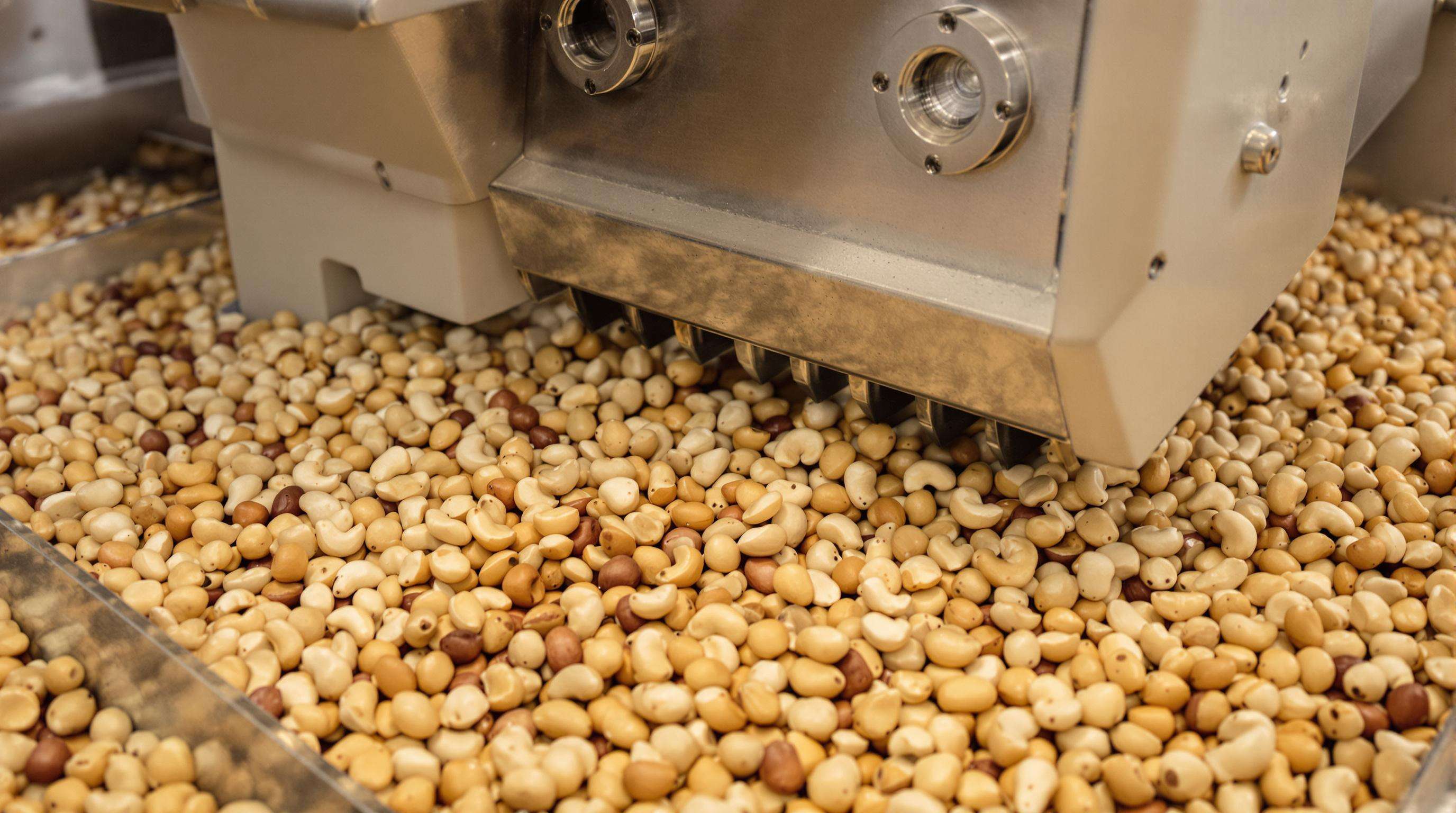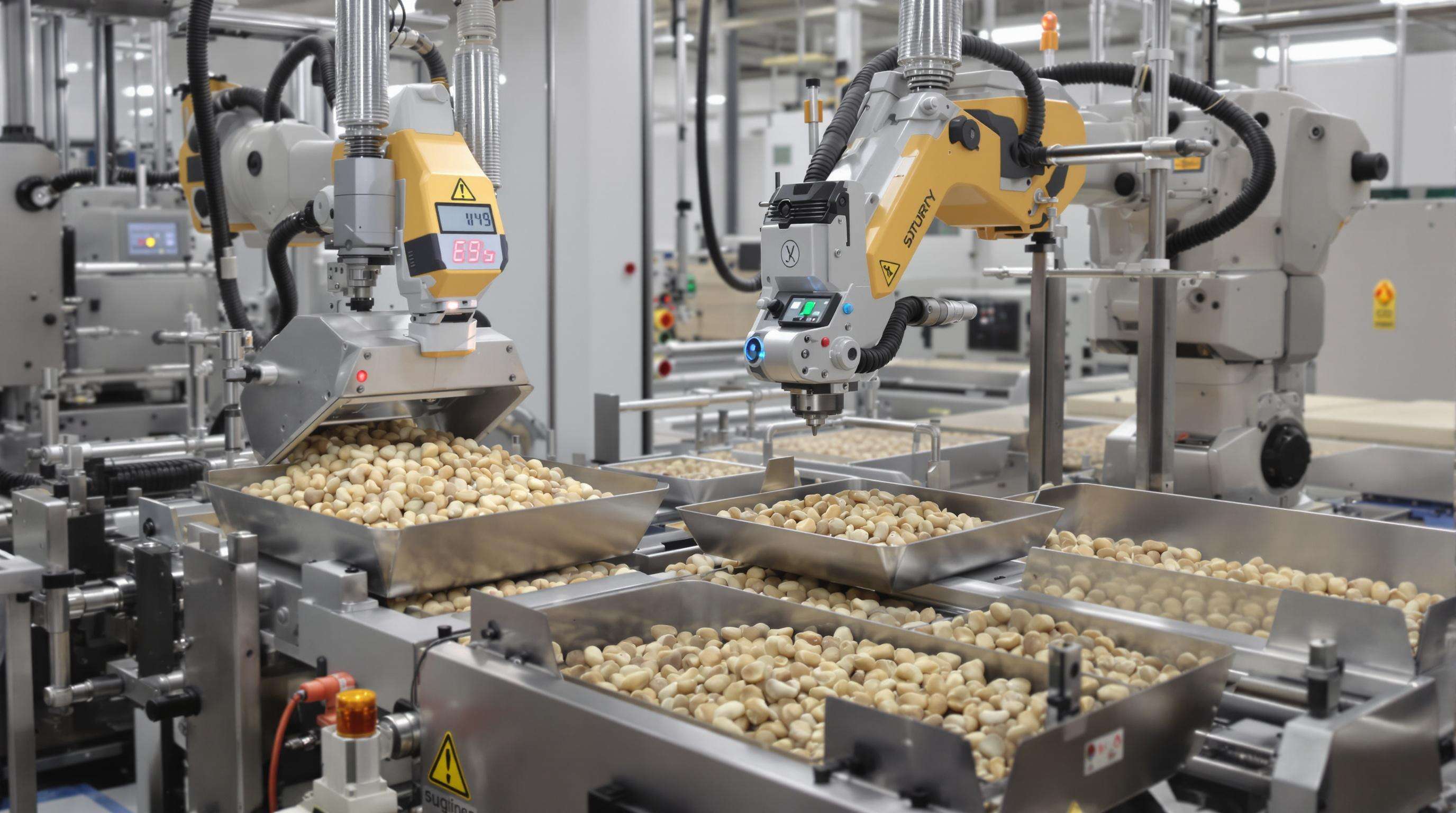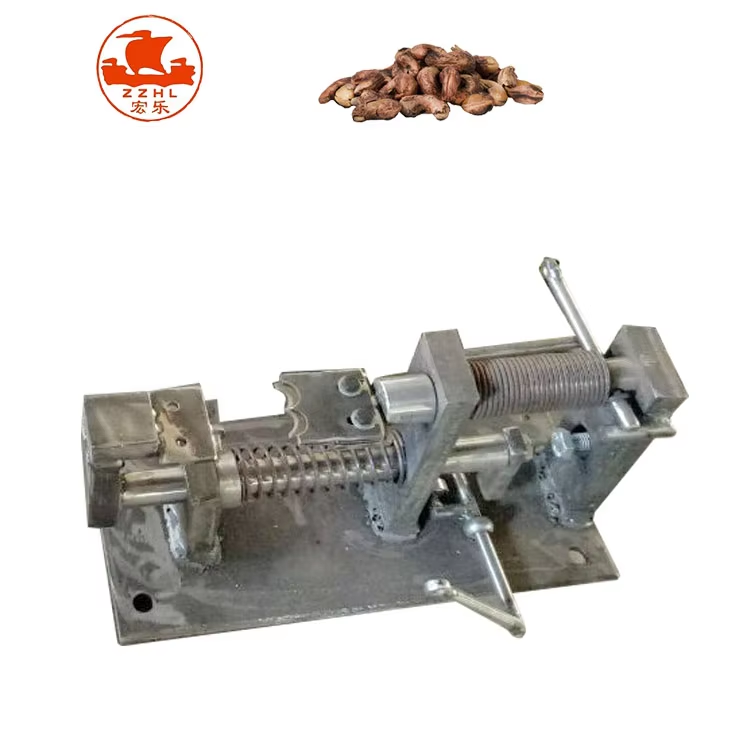Critical Damage Factors in Cashew Nut Shelling Machine Operations

Moisture Content's Impact on Cashew Kernel Integrity
Optimal kernel moisture levels (8–10%) reduce breakage by 38% compared to drier nuts (Cashew Processors Guild 2023). Excessive moisture leads to rubbery shells, while overly dry kernels crumble under mechanical pressure. Modern shelling systems integrate real-time humidity sensors to adjust processing parameters, though manual moisture testing remains critical for batch consistency.
Feed Rate Optimization for Minimizing Shelling Stress
Throughput exceeding 400 kg/hour per blade unit increases kernel fractures by 22%. Variable-frequency drives allow operators to sync feed rates with nut size–smaller cashews (<20mm) require 15–20% slower conveyance than jumbo grades. Pulsed feeding prevents mechanical overload, achieving 92% whole-kernel recovery when properly calibrated.
Blade Configuration and Pressure Calibration Techniques
Multi-blade systems with 10° bevel angles demonstrate 40% less kernel nicking than standard 25° configurations. Adjusting pressure (12–18 MPa) based on shell thickness reduces force-related damage, with properly tuned machines showing <3% internal fractures. Dual-stage compression cracks the shell’s dorsal seam first for cleaner separation.
Nut Size Variation Challenges in Automated Shelling
Mixed cashew sizes (16–24mm) cause 19% higher partial-breakage rates versus sorted batches. Advanced grading systems (dual vibrating screens, optical sorters) achieve 98% size uniformity, enabling precise machine adjustments. Some manufacturers use adaptive throat plates that resize based on nut dimensions, requiring 0.5-second recalibration delays between size groups.
Pre-Shelling Preparation Strategies
Grading and Sorting Protocols for Uniform Processing
Optical sorting systems classify nuts by length and width (18–22mm premium grade standard) to ensure uniformity. Conveyor belts separate undersized specimens, reducing kernel fractures by 30–40% compared to unsorted batches. This standardization enables consistent blade alignment and pressure distribution.
Conditioning Treatments to Enhance Shell Brittleness
Steam exposure (98–102°C for 12–15 minutes) induces micro-fractures in shells while preserving kernel moisture. Alternatively, oil bath immersion (140–160°C for 90 seconds) weakens shell integrity through thermal stress. A recent study found steam conditioning increases whole kernel yields by 22% by optimizing fracture patterns.
Operational Best Practices
Vibration Control During High-Volume Shelling Cycles
Excessive vibration increases kernel fractures by 18–22% (FAO 2023). Solutions include:
- Weekly checks on motor mounts and bearings
- Isolation platforms to decouple machine vibrations
Real-Time Monitoring and Adjustment of Compression Settings
Modern shellers use load sensors to auto-adjust crushing forces (120–180 psi) based on nut size. Daily calibration with test batches is critical–10% over-compression shatters kernels. Real-time dashboards displaying pressure distributions reduce mechanical stress by 40%.
Operator Training Protocols for Damage Prevention
Structured training improves recovery rates by 25% within six months. Key components:
- Visual identification of optimal shelling positions
- Emergency stop protocols for jammed feed systems
- Interpretation of machine performance analytics
Maintenance Routines for Sustained Performance
Daily Blade Sharpness Testing and Replacement Schedules
Blade erosion causes 34% of premature fractures. Best practices:
- Twice-daily edge checks with precision micrometers
- Replacement every 8–10 operational hours (tungsten carbide blades)
Lubrication Systems for Reducing Mechanical Friction
Key points:
- Use ISO VG 32 food-grade lubricants every 150 minutes
- Focus on camshaft bearings, hydraulic piston guides, and conveyor chains
Alignment Verification for Conveyor and Crushing Zones
Weekly laser alignment checks prevent:
- Conveyor tracking deviations (>2mm misalignment triples kernel impacts)
- Crusher plate gaps (optimal tolerance: ±0.5mm)
Innovative Technologies Reducing Damage Rates

AI-Powered Vision Systems for Precise Nut Positioning
Machine vision cameras map nut orientation 50 times per second, cutting misalignment errors by 73%. This preserves kernel protection zones, reducing split kernels by 40%.
Adaptive Pressure Control Mechanisms
Force-sensitive actuators adjust compression based on nut hardness, decreasing fractures by 35%. These systems combine moisture and size data to maintain >92% whole kernel rates.
Case Study: Vietnam’s Low-Damage Shelling Success
A Vietnamese processor reduced waste by 50% using:
- Hyperspectral imaging for defect detection
- Pneumatic shell ejectors to protect kernel surfaces
The upgrades increased premium-grade recovery by 22% and throughput by 15%.
Frequently Asked Questions
What moisture content is optimal for cashew kernel integrity?
Optimal moisture levels for cashew kernels are between 8–10% to minimize breakage and ensure integrity during shelling.
How can operators reduce damage during cashew shelling?
Operators can reduce damage by optimizing feed rates, using adaptive pressure control, ensuring proper grading of nut sizes, and performing regular maintenance checks.
What role do AI vision systems play in cashew shelling?
AI vision systems help by accurately positioning nuts to reduce misalignment, which in turn lowers the rate of split and damaged kernels.
How does moisture affect cashew shelling?
Excessive moisture can make shells rubbery, while dry kernels may crumble. Maintaining optimal moisture ensures efficient shelling with minimal damage.

